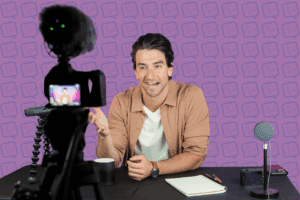Three Ways Creators Can Avoid Unfair Edit Requests

If you have been doing sponsored integrations with brands long enough, you’ve probably been through at least one round of unfair edit requests from a brand. Brand managers aren’t content creators, so they often do not know how much work it can be to edit a video or reshoot an element. These edits can cost you a lot of time and money, so it is important to do everything in your power to avoid this type of experience. Here are three tips that I think every creator should know and utilize when working with brands.
- Demand and Mutually Approve the Creative Brief: If a brand doesn’t provide you with a pre-approved creative brief, your sensors should start to go off. This brand likely does not know what they are doing and you need to be careful. Before signing any contract, ask that the brand (1) create a talking points document for you and (2) ensure that edits to the ad you create are limited to your accurate representation of the talking points and the laws and regulations of your state and country. If agreements do not mention these two items, you are inviting brands to give you unrealistic and unnecessary edit requests.
- Share a “Treatment” of the Ad and the Video: A “video treatment” is an entertainment industry term that has made its way into influencer marketing. Put simply, a treatment is a brief writeup that describes the content you plan on creating and how you intend to integrate the brand. Details such as the title of the video, participants, timeline are key to an effective treatment. The treatment’s overarching goal is to make sure both parties are on the same page. You don’t want the brand to think you are making a dedicated video, when you think this is just a 60 second integration. Before you sign an agreement with a brand, we always recommend sending a video treatment and then getting that treatment written into the agreement, so there aren’t any surprises when it gets to the time to review and approve your video.
- Use Your Brain and Keep it Brand Safe: We live in a climate where brands are fearful of internet retaliation. Use your best judgment and ask yourself when filming the ad or video if this is a topic that the brand will be concerned about. Does it seem inappropriate, inflammatory, derogatory, in any way? Leave out curse words, professionally endorse the product or service, and make sure you are giving fans the information they need to make an educated decision about the product. Don’t make it hard for the brand. Ensure that your content is brand safe and something the brand manager is going to be proud to show the rest of the team.
Managing expectations is the key to avoiding unfair edit requests. Make sure a brand knows what to expect, get their alignment on the topic in writing, and execute the ad in a professional manner. If you are able to do that, brands will be more likely to keep the edit requests to simply ensure accurate statements about their products and any legal requirements.





